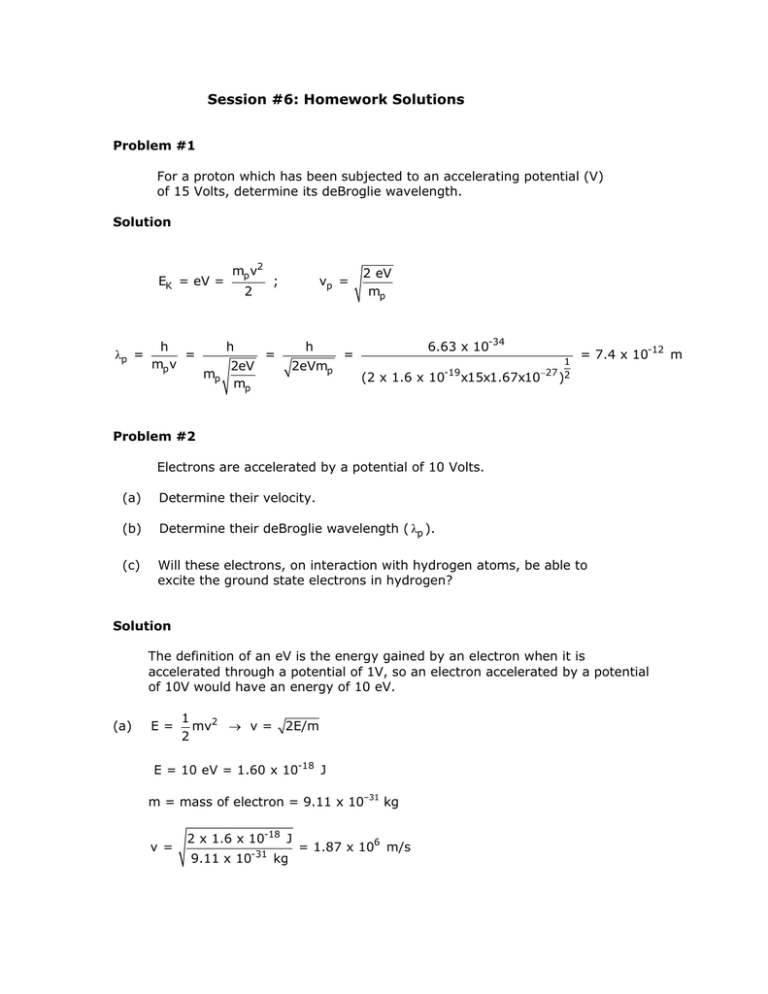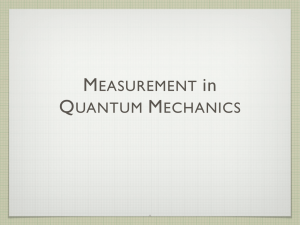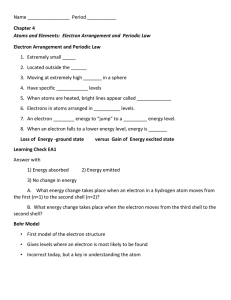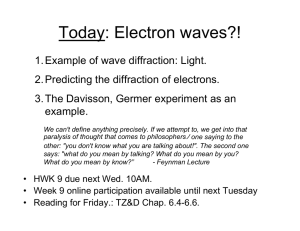Session #6: Homework Solutions
advertisement

Session #6: Homework Solutions Problem #1 For a proton which has been subjected to an accelerating potential (V) of 15 Volts, determine its deBroglie wavelength. Solution EK = eV = λp = h = mp v mp v2 h mp ; 2 2eV mp vp = h = 2eVmp 2 eV mp 6.63 x 10-34 = (2 x 1.6 x 1 -19 −27 2 10 x15x1.67x10 ) = 7.4 x 10-12 m Problem #2 Electrons are accelerated by a potential of 10 Volts. (a) Determine their velocity. (b) Determine their deBroglie wavelength ( λp ). (c) Will these electrons, on interaction with hydrogen atoms, be able to excite the ground state electrons in hydrogen? Solution The definition of an eV is the energy gained by an electron when it is accelerated through a potential of 1V, so an electron accelerated by a potential of 10V would have an energy of 10 eV. (a) E= 1 mv2 → v = 2 2E/m E = 10 eV = 1.60 x 10-18 J m = mass of electron = 9.11 x 10–31 kg v = 2 x 1.6 x 10-18 J -31 9.11 x 10 kg = 1.87 x 106 m/s (b) λp = h/mv λp = 6.63 x 10-34 -34 9.11 x 10 6 kg x 1.87 x 10 m / s = 3.89 x 10-10 m (c) The energy the electrons have (E = e.V = 1.6 x 10–18 J) must be compared with the smallest energy required to excite a H electron – that needed to move the electron from the n=1 shell to the n=2 shell. ⎛ 1 1 ⎞ 1 1 E = k⎜ - ) = 1.64 x 10-18 J ⎟ = 2.18 x 10-18 J ( 2⎟ ⎜n 2 4 1 ni ⎠ ⎝ f The E that the electrons have (1.6 x 10–18 J) is less than that required to excite an electron from the n=1 to the n=2 shell (1.64 x 10–18 J), so no excitation could occur. MIT OpenCourseWare http://ocw.mit.edu 3.091SC Introduction to Solid State Chemistry Fall 2009 For information about citing these materials or our Terms of Use, visit: http://ocw.mit.edu/terms.




